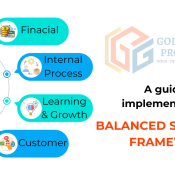
The 8 Steps to a Successful Internal Communications Strategy
An effective internal communication strategy may make or break a business transition throughout the growth stage or during substantial organisational changes.
This form of ‘inside marketing’ has never been more significant. Employee engagement has been at an all-time low in organisations throughout the world since late 2021. Furthermore, the transition from face-to-face to hybrid and totally remote work modes has worsened the problem.
This article will discuss why internal communications are important, present a step-by-step method to assist you in developing a successful internal communications plan to execute your strategy and share professional insights to guarantee you get the most out of your internal communications process.
Do you know why internal communications should never be neglected?
Any corporate transformation or shift can be difficult. According to Gartner, 7 out of 10 employees affected by change experience increased stress and perform worse than ordinary employees.
However, implementing a strong internal communications plan may aid in mitigating and dealing with change-related challenges.
Internal communications provide various advantages in the context of a change management process, including:
Focus: Communicating your organization’s goals, strategies, and change advantages may assist teams in maintaining momentum and focus when implementing or adjusting to new procedures, technologies, or methods of working.
Engagement and Motivation: Many organisations struggle with change projects because they fail to explain the “why” behind them.
Managing change resistance: Communicating with all stakeholders and anticipating their concerns might help with acceptance and implementation.
The 8 Steps to Building and Executing an Internal Communications Plan
Identify the triggers and the situation
Before you begin working on your strategy, you must first understand the context of change and the communication requirements of your organisation. Understanding why your organisation is pushing a particular sort of change is critical to developing an internal communication strategy that will best support it.
Determine why this change is required and what must occur inside the organisation to ensure its success. Your company’s transformation should inform your internal communications strategy aims as well as its overall business goals.
Understanding these factors can assist you in determining the best way to carry out communication campaigns.
Here are a few crucial questions to ask:
What prompted the need for change? Is it the result of new technology adoption, competitive pressure, downsizing, or merger & acquisition?
What practical advantages would this transformation bring to the company, its employees, and its future? A clear picture of these results might assist you in communicating the advantages of your company’s transformation programme.
What are we attempting to achieve? In addition to the future vision communicated to management, each team should have clear KPIs, OKRs, or targets to follow throughout transition times.
What has to be altered if we are to meet these new corporate objectives? Identifying focus areas is critical to the success of any new programme or change inside an organisation. These answers will help you to build a highly effective internal communication strategy and inform your planning process.
Stakeholder identification
Before implementing your internal communications strategy, you must identify the various roles and stakeholders who will be impacted by the change. Is this involving members of the C-suite? Is there going to be a big impact on mid-level managers, various department teams, or frontline workers as a result of this change?
You must map out all of the different sorts of audiences since this will allow you to design a message that is personalised to each of them. Each kind will have unique requirements and will be affected differently. Furthermore, each set of stakeholders will require distinct motivators. Every audience is unique.
“Communication methods and languages will vary depending on the type of team or business unit within your organization. It’s important to understand that everyone is motivated by different things.” – Dr P V Siddharth, CEO, Cullinan Golden Gate Properties.
Many managers fall short in this area by focusing just on important decision-makers and C-level executives, or by disregarding whole departments. The end result? A too simplistic and reactive corporate communications approach.
Your communications plan must take into account the roles, concerns, and consequences of change projects. It must also go above and above to recognise the unique demands of your organization’s teams.
Narrative development
After identifying the stakeholders involved in the change process, you’ll need to create a story that will keep everyone interested.
Any internal communication plan should aim to get widespread support from all people in your organisation, not simply business executives. You should successfully convey the value of your change endeavour, directly address concerns, and make the transition as painless as feasible.
Crafting captivating narratives and communication strategies includes thinking about how to best explain your change initiatives to your various audiences. For example, your manufacturing workforce will require an entirely different strategy than your R&D team. Remember that each audience has a unique motivation. You should be able to articulate the benefits of change to each sort of audience and how the change will benefit them.
Establish key channels and tools for internal communication
The following stage is to plan how you will use internal communication technologies to maximise effect and reach.
Here are several possibilities:
If you know your employees seldom read their emails, keep essential corporate information out of their inboxes. Frontline personnel, for example, may not have their own business e-mail account, so you cannot depend just on one communication channel.
Use communication platforms like Slack, Teamwork, or Microsoft Teams to improve real-time collaboration and engagement.
If your senior leadership organises quarterly meetings to discuss strategy, incorporate your communications plan into these discussions.
Develop a communication toolkit
Make sure there are no gaps that might lead to misunderstandings or a lack of communication. Create resources that will assist mid-level managers and team leaders in communicating the context of change and motivating their team members.
Here are some ways you can facilitate consistent communication across your organization:
- Updates on your organization’s intranet site
- Email updates
- Social media posts
- Online courses and webinars
- One-on-one training sessions
- In-person or remote workshops
- Learning materials for managers.
- Short video guides
- Guidelines for communication with different audiences
Extra tip: Choose a champion per department, someone credible and respected who can help you develop and advocate for change initiatives.
You should also keep in mind that your internal communication strategy may need to go through a learning curve. So be patient, monitor results, and adjust your approach and materials if needed.
Set a schedule (and stick to it)
Staying on track and aligning your efforts with your organization’s transformation or transition is critical to executing a successful internal communication plan.
When key stakeholders are aligned on common goals and responsibilities, strategy execution and effect will be maximised.
An internal communications strategy that includes a timetable, calendar, and time frame will assist everyone in understanding what has to be done and when.
Set goals and Key Performance Indicators (KPIs) to measure success
Making a timetable is only the first step. You’ll also need a method to guarantee that all important actors are working together to achieve your communication objectives. Without implementation, an internal communications plan is simply worth the paper it’s written on.
Whether you use KPIs, OKRs, or another performance management tool, you’ll need to track metrics and assess progress to determine the effectiveness of your projects.
In a strategy execution platform like Cascade, for example, you can create an internal communications plan, define targets and KPIs, and assign team members to promote accountability.
Recommended Reading: How To Set Team Goals In The Right Way
Review and adjust your strategy
If you want a successful internal communications plan that won’t fizzle out in the next six months, you must review and, if necessary, course-correct.
For example, you may look at email click-through and open rates, how workers react to your approach, and obtain input on the sort of material you’re utilising. If Plan A doesn’t work, try Plan B.
Recommended Reading: Building a people-centred Strategy.



